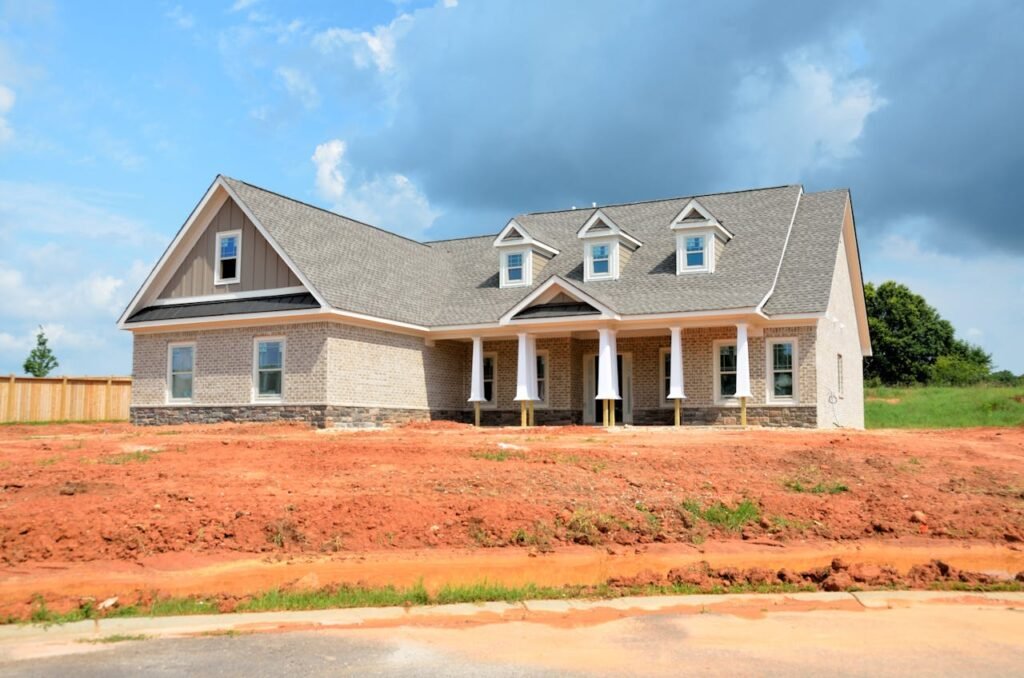Building a new house provides a chance to practice environmental consciousness. Selecting sustainable materials will enable a construction project to have a substantially reduced environmental effect. These products not only serve to make the planet better but also increase the efficiency and longevity of the house. This page lists five environmentally friendly construction materials to give thought to.
Bamboo
Celebrated for toughness and rapid expansion, bamboo is a very eco-friendly construction resource. One renewable resource is being able to grow three feet in one day. It is quite light, which can assist in saving transportation costs and construction energy use. As bamboo grows as well, it absorbs carbon dioxide, therefore lowering greenhouse emissions. Including bamboo in home construction will enable owners to have a stylish and eco-friendly alternative.
Moreover, resistant to diseases and pests is bamboo, which reduces the requirement of using harmful chemicals during their development. Its versatility makes it a popular choice for sustainable design, as it can be used for numerous purposes, from ornamental accents to structural parts.
Reversed Steel
A robust and long-lasting material utilized with growing frequency in house building is recycled steel. Among the most recycled goods accessible globally is steel; consequently, using recycled steel helps to reduce the need for new, energy-intensive steel production. Usually used for siding, roofing, and framing, this material is strong and fire- and pest-resistant. Furthermore, compared to new steel, recycled steel may be produced with less energy, therefore reducing carbon emissions.
Choose steel goods from those produced from at least 25% recycled materials. Including recycled steel in house building helps to improve structural integrity and supports sustainability. Additionally, rather flexible, recycled steel provides creative freedom for both classic and contemporary architectural forms. For homes trying to reduce their environmental impact, its minimal care needs and extended lifetime make it an affordable and green option.
Straw Bales
Innovative and ecological construction material with great insulating qualities is straw bales. A plentiful and renewable resource, straw is a waste product of grain manufacture. In buildings, straw bales may provide good thermal insulation, therefore lowering the heating and cooling energy usage. Often used in walls, this substance offers a natural, environmentally beneficial alternative to more conventional insulating techniques.
Moreover, because straw bale building usually consumes less energy for heating and cooling, it may be reasonably affordable. When thinking about straw bales, make sure they are correctly sealed and moisture-protected to stop deterioration. Straw bales let homeowners build ecological and energy-efficient houses. Because the component is biodegradable and needs no processing, straw bale building also has negligible environmental effects. Furthermore, dwellings constructed from straw bales have a distinctive, rustic look that would fit very well with their natural surroundings, therefore providing both practicality and visual appeal.
Used Wood Reclamation
Still, another great ecological construction resource is reclaimed wood. Old buildings, barns, and other buildings provide this kind of timber for salvage; it then finds a second life. By using reused wood, one lessens the need for fresh timber, therefore helping to save forests and slow down destruction. Moreover, salvaged wood usually has a special character and history, which accentuates any environment.
Flooring, beams, cabinets, and furnishings all find use here. Make sure the salvaged wood you choose has been properly treated to avoid problems such as mold or bugs. By reusing goods that might otherwise wind up in landfills, reclaimed wood also helps create a circular economy and aids in reducing waste. Because of its natural weathering and patina, the house gains a clear, aged look from every piece of wood, which distinguishes each one.
Vinyl Sustainable development
One often used flexible material in the building is PVC, or polyvinyl chloride. Although conventional PVC has drawn criticism for its effect on the environment, manufacturing advances have produced more sustainable choices. Usually recyclable itself, modern PVC goods may be created from recycled components. This lessens the demand for fresh raw resources and trash generation. Because of its minimal care needs and longevity, PVC finds employment in windows, siding, and plumbing, as well as other areas. When choosing PVC goods, search for ones that stress sustainability and with certificates proving ethical manufacturing methods.
Considering PVC sustainability helps homeowners make decisions that support a more environmentally friendly construction process. PVC’s long lifetime and resistance to mildew, mold, and decay further help it to be a strong option for many uses, therefore lowering the need for replacements. Choosing environmentally friendly PVC solutions guarantees a more sustainable construction project by helping homeowners get both pragmatic and environmental benefits.
Conclusion
Using sustainable materials in house building may save money and have major positive effects on the surroundings. Excellent possibilities for a new house include bamboo, recycled steel, straw bales, repurposed wood, and sustainable PVC. Along with helping to lower the environmental impact, these materials improve the general comfort and quality of the living area. Making wise decisions regarding construction materials can help homeowners design a sustainable and effective house that helps their family as well as the surroundings.
